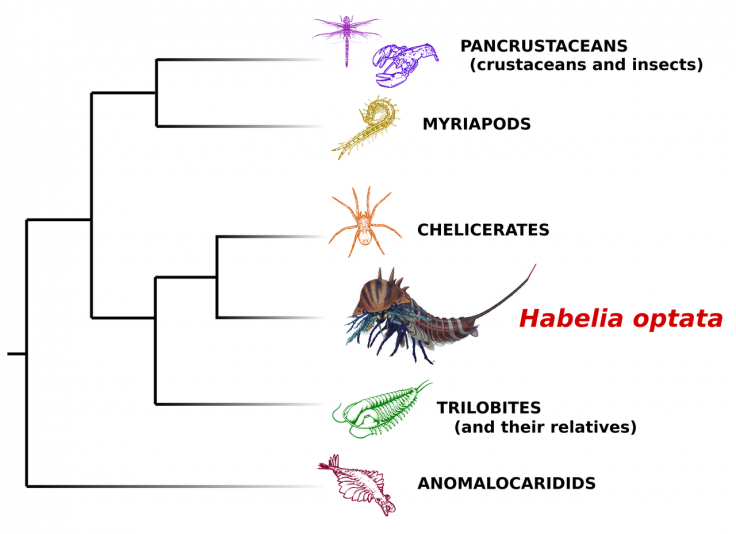
A mysterious sea-creature called Habelia optata is being studied by palaeontologists for its extremely complex head which resembles a jackknife. The ancient creature lived 508 million years ago in the sea and was a fierce predator, in spite of its tiny size.
The creature has been of interest to scientists since it was discovered a century ago as they were having trouble categorising it. Earlier, it was said to be a mandibulate but recent discoveries have suggested that it is an arthropod which might be the most ancient relative of crabs and spiders.
The research, published in BMC Evolutionary Biology, has been conducted by lead author Cedric Aria of the PhD program in the Ecology and Evolutionary Biology department of Faculty of Arts & Science at University of Toronto and co-author Jean-Bernard Caron, the senior curator of invertebrate palaeontogy at the ROM and an associate professor in the same institution.
The newly observed creature had a tail as long as its body. It lived during the middle Cambrian period and has come from British Colombia's renowned Burgess Shale fossil deposit. It evolved in a unique way during the Cambrian explosion, during which all major animals were being formed through rapid evolution.

Although the Habelia optata has been extinct for thousands of years, it has fascinated researchers due to its anatomy. Fossils have revealed that two small appendages were present towards the front of its body which helped it cut its prey. And even though the sea predator had the typical segmented body, external skeleton and jointed limbs of an arthropod, its sub-group remained unclear.
This new analysis throws light on the fact that this fascinating creature was a close relative of all chelicerates, a sub-group of arthropods, reports EurekAlert.

Habelia now shows in great detail the body architecture from which chelicerates emerged, which allows us to solve some long-standing questions," said Aria, who is presently a post-doctoral researcher at the Nanjing Institute of Geology and Palaeontology, in China. "We can now explain why, for instance, horseshoe crabs have a reduced pair of limbs - the chilaria - at the back of their heads."
Aria also added that the creature had seven pairs of limbs attached to its head. This helped them to understand why creatures like crabs and scorpions have limbs attached to their head, which help them to walk.

"We think that these regions broadly correspond to those of Habelia. But a major difference is that scorpions and sea scorpions, like all chelicerates, literally "walk on their heads", while Habelia still had walking appendages in its thorax," says Aria. The study was based on the analysis of 41 specimens acquired by ROM-led fieldwork parties to the Burgess Shale.

Researchers have said that the series of appendages and jaws on Habelia's head and stiff bristle-like spines for caching prey made it an exceptional predator. "This complex apparatus of appendages and jaws made Habelia an exceptionally fierce predator for its size. It was likely both very mobile and efficient in tearing apart its preys," says Aria.
From the analyses and observations, researchers have concluded that the Habelia optata was an expert in hunting small marine creatures on the sea-bed, like trilobites. It is indeed fascinating to imagine how it would have impacted the marine ecosystem had it been alive today.
Check out these videos to find out how the fierce predator looked:
Read more









